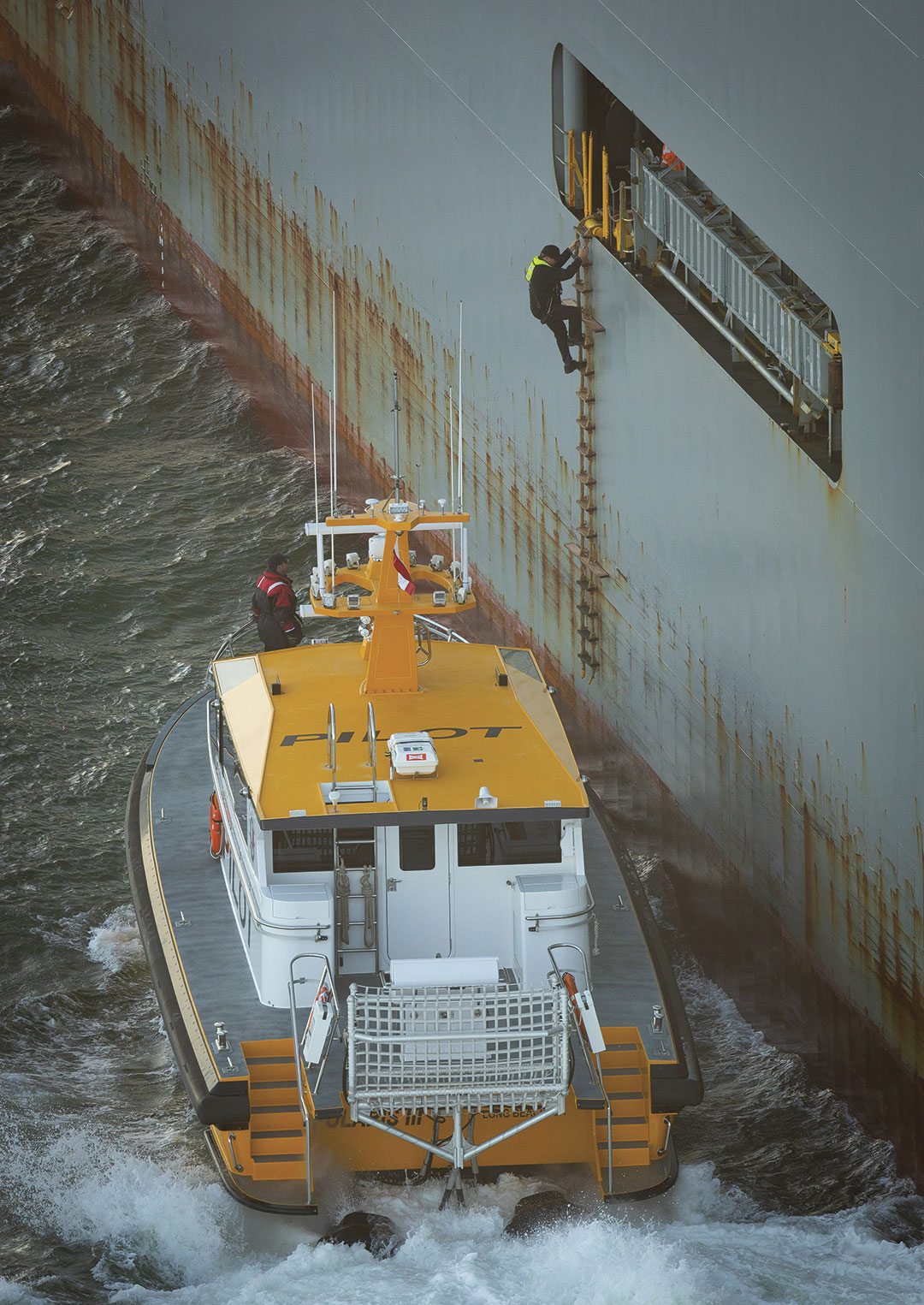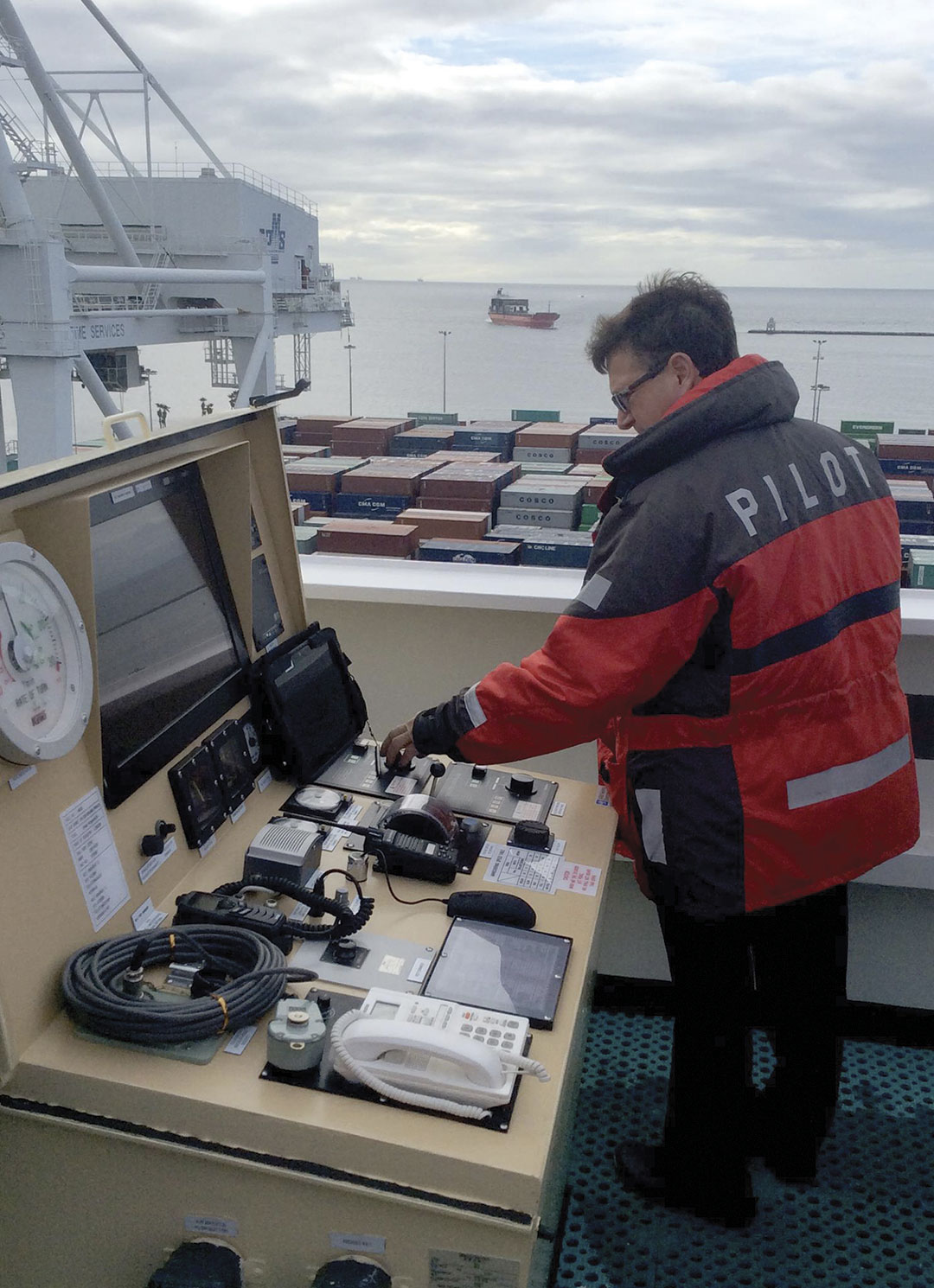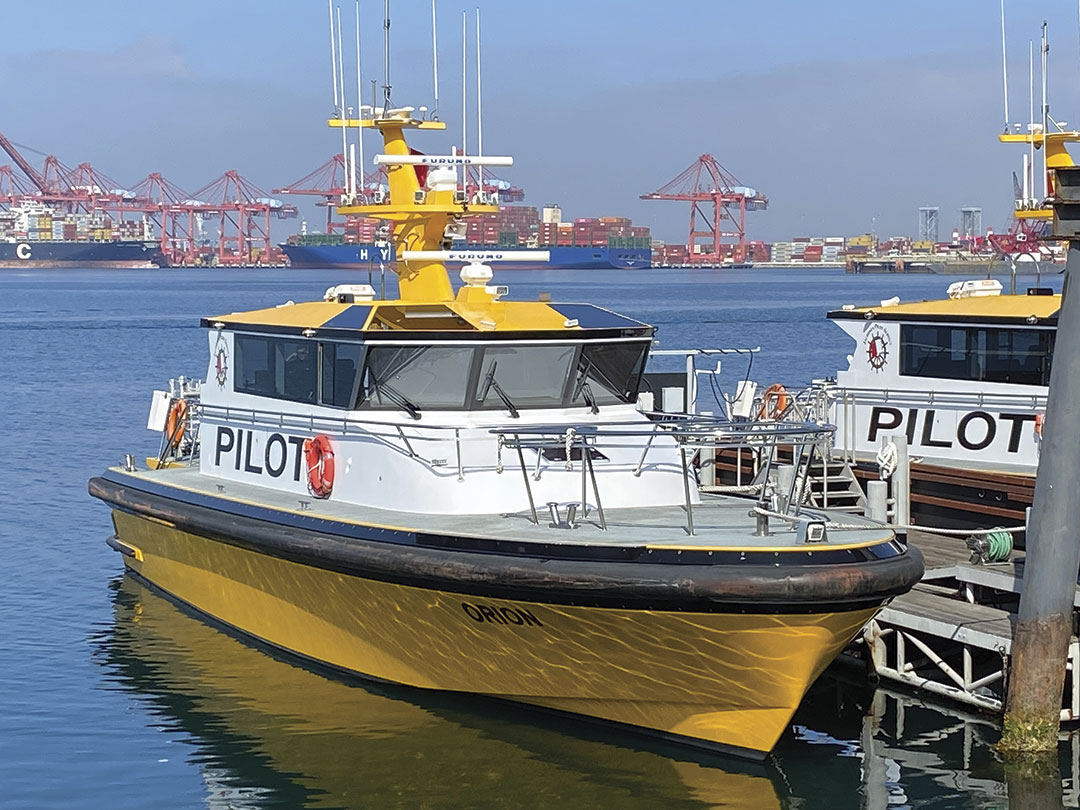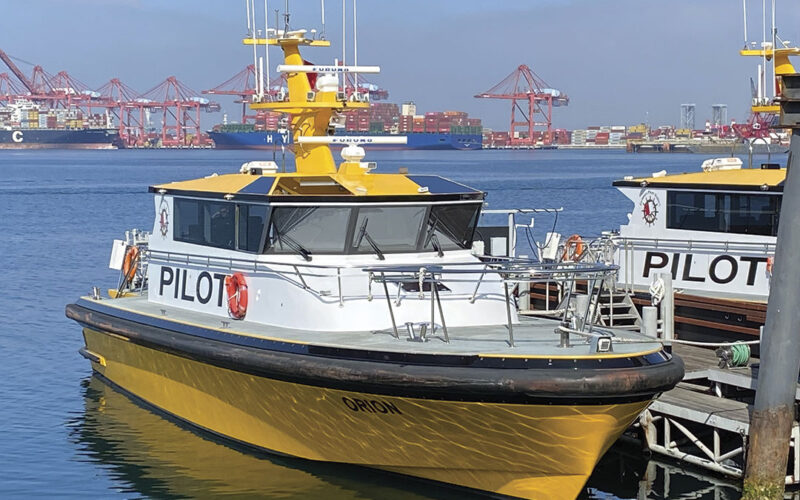
On Dec.26, 2015, the containership CMA CGM Benjamin Franklin, bound for a berth at the Port of Long Beach, sailed into a placid San Pedro Bay on its maiden arrival.
A cursory glance at the event would evoke minimal interest, seeing as countless ships have called at the Southern California port since it handled its first vessel more than 100 years before.
This call was different – literally – in a big way.
CMA CGM Benjamin Franklin was, at the time, the largest containership ever to call at a North American port – a 1,300 foot, 18,500 deadweight ton behemoth with a staggering container capacity of 18,000 TEUs which, if laid end-to-end, would stretch for an eye-brow raising 68 miles.
And on the bridge, guiding the massive ship into her berth, was pilot Capt. Mark Coynes, an honors graduate of the U.S. Merchant Marine Academy, a veteran of more than 30 years at sea, and holder of an Unlimited Master License upon Oceans, and a First Class Pilotage certificate for Los Angeles/Long Beach and Anaheim Bay.

Coynes serves as Vice President of Jacobsen Pilot Service in Long Beach. He joined the company in 2001 after a career that took him from high school work aboard fishing boats in Southern California to Master aboard a variety of ships on coastwise, intercoastal, and foreign trade routes.
“There was some pressure, but after all a ship is a ship and each one has its own characteristics,” he told Professional Mariner. “One of my senior pilots was there as my number two, just in case there was a problem. We’d done this before, we had the technology, the training, the skill at every level from the tugs to the line handlers, and the assurance that you can only get from experience.”
It is that experience – an adaptable form of muscle-memory borne of an intimate knowledge of the unique characteristics of the Port of Long Beach’s varying depths, tides, weather conditions, and somewhat tight environment – that was the key element in successfully handling not only the “Big Ben,” but every ship entrusted to one of Jacobsen’s 22 pilots.
“We had to make sure the tides were right and that we were up to speed on handling every possible contingency,” said Jacobsen President and CEO, Tom Jacobsen. “It’s a little shallow for that big a ship, so we studied all the possibilities and did our due diligence. It all paid off and Capt. Coynes did a fantastic job getting the ship into a relatively tight space. He turned it perfectly and backed it in.”
A Master Mariner himself, Jacobsen is the third-generation head of the company, which was founded by his grandfather in 1924. At age 19, Jacobsen obtained his first U.S. Coast Guard license to operate the Long Beach Pilot Boat. A graduate of the California Maritime Academy with a degree in Nautical Industrial Technology, he first earned an Unlimited Third Mates License.

After working on a number of ocean-going freighters, tankers, and bulk carriers, he secured his Unlimited Master Mariners License and an Unlimited First Class Pilotage Endorsement.
“I’d spent a lot of time in the Persian Gulf, the Mediterranean, and in Asia,” said Jacobsen. “I had accumulated a lot of days at sea just to move up and get my unlimited masters license. Then after about five years, there was an opening for the pilot training program, so I came ashore.”
After completing Jacobsen’s pilot training , he transitioned into company management, carrying on the family-style ethos that serves as its core value – a corporate attribute that has attracted top-notch employees from its pilots and pilot boat operators to its dispatchers, maintenance crew, and support staff.
An early observer of how the company conducts its business, Coynes said, “I’d seen Jacobsen pilot boats at work over the years and I knew it by reputation as a great company to work for. I knew early on that, at some point, it was the company I wanted to work with.”
While Jacobsen Pilot Service continues its tradition of its pilots wearing ties and being properly attired when boarding the ships to which they are assigned, the company has never shied away from implementing the latest technologies that have helped it achieve its singular mission – the safe handling of vessels entering and leaving the Port of Long Beach, one of the world’s busiest deep-water ports, 24/7 in any and all circumstances and weather conditions.
In 1940, Jacobsen Pilot Service was one of the first to equip its pilots with a portable radio-telephone, which gave them the capability of ship-to-shore communication. Nine years later, the company made history when it became the first pilotage service in the world to operate a shore-based radar system to guide ships calling at the port in all weather conditions. The system was improved over the ensuing years with the utilization of fiber optics and microwave for remote radar applications.
In 1996, Jacobsen developed PilotMate, the very first the carry-on-board Differential Global Positioning System, and four years later, became the first and only pilot service company in the country to be granted ISO 9001 certification.
Most recently, the company worked with the National Oceanic and Atmospheric Administration to develop and implement S-102, a new high-precision navigation tool that “makes shepherding ships through the underwater terrain unique to the country’s ports safer than ever.” Jacobsen was selected by the agency because, “it routinely upgrades its technology, which includes software that analyzes water levels, tides, currents, waves and weather.”
 Key to Jacobsen’s operations are its trio of pilot boats, two of which – Orion and Polaris III – are identical sisters that feature the latest advances in design and technology. Built by Tacoma, Wa.-based Nordlund Boat Company, the 63.6-foot, all weather-capable, fiberglass-hulled boats went into service for Jacobsen in 2018 and 2020, respectively.
Key to Jacobsen’s operations are its trio of pilot boats, two of which – Orion and Polaris III – are identical sisters that feature the latest advances in design and technology. Built by Tacoma, Wa.-based Nordlund Boat Company, the 63.6-foot, all weather-capable, fiberglass-hulled boats went into service for Jacobsen in 2018 and 2020, respectively.
Both boats are equipped with Hamilton jet drive propulsion systems that enable the boats to “crab” sideways as well as bring the vessel to a complete “crash stop” from full speed in a distance as little as one boat length.
The boats are also equipped with a hydraulic man overboard rescue system (MORS) mounted on the stern, with an aft control console. The rescue lift has a submersible frame with web mesh that opens and lowers below surface level to allow a quick retrieval of an injured man overboard.
“Years ago, we had fiberglass boats and they proved very well,” said Jacobsen. “They lasted 40 years and we tried to go with aluminum, but we had a problem with corrosion and the one we had built just didn’t hold up for long. We decided to go back to fiberglass and we did some research and found out that the Puget Sound pilots used Nordlund to build their boats.
“We started piecing things together,” said Jacobsen. “We interviewed Nordlund and found a lot of similarities between our corporate philosophy and theirs. We got along well and we saw how well-built and tough the boats are that Nordlund built for both the Puget Sound and Columbia River Bar Pilots. They’ve been in service now for 25 years. We decided to go with them and we’re happy we did. Orion and Polaris III are both fantastic.”
Echoing Jacobsen’s appraisal of the two boats is Dan Kennedy, Jacobsen’s pilot boat operations manager.
“They’re essentially workboats, but they handle like a race car,” says Kennedy, who has served at the helm of Jacobsen pilot boats for 30 years. “The Hamilton jet drives have been fantastic for both all-weather maneuverability and safety reasons, and the over-all design, stability control features, multiple docking stations, safety equipment, and electronics, are the best.”
While the pilot boats themselves may improve and become more technologically advanced, there are some things that never change, said Kennedy.
“There are so many different scenarios and so many different types of landings that you can face,” said Kennedy. “You’re not stuck in a rut as you’re always thinking, ‘Oh, this is gonna be interesting.’ It could be the position of the ladder or just the way the wind is blowing and how the swell is forming up or the roll of the ship.”
For some people, he said, “Doing the same thing over and over can become mundane, but there’s always something different here that keeps it exciting, so getting up at 2:45 a.m. isn’t a struggle and I’ve never woken up in 30 years thinking I’d ever want to do anything else.” •

